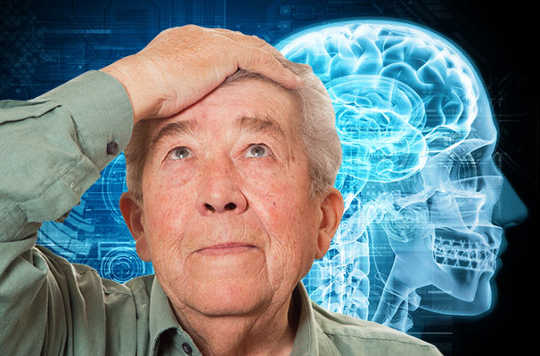
Normal aging comes with many changes in brain structure and function. As individuals approach the age of 65 years and above, they experience normal aging, which encompasses the universal processes that occur to the brain in the absence of disease. Many people also experience age-related diseases, which are not part of the normal processes that occur to the aging brain. Newer research has tapped into successful aging to understand how some agers reach their later years with minimal signs of aging’s more detrimental effects.
What are normal changes in aging?
Most aging individuals experience declines in processing speed and executive function, which are two important cognitive abilities that describe the efficacy and control of the brain in everyday life. For instance, it’s not unusual for older people to feel slower at understanding new concepts, or to have issues in controlling socially appropriate behavior. One’s vulnerability to aging is thought to be partially determined by neuronal architecture that develops in childhood.
More years on this planet also means that individuals have more time to develop their semantic memory, or knowledge of the world.
Aging isn’t an entire downhill slope, though! Vocabulary, in contrast to long term memory and working memory, actually increases over the lifespan as one acquires knowledge of more words, perhaps by reading more books or interacting with more people. More years on this planet also means that individuals have more time to develop their semantic memory, or knowledge of the world.
How do the brain’s cells look in aging?
Zooming into the brain has shown us that almost all of the working units of the cortex falter in aging: neurons, myelin, and neurotransmitters have all been observed to change over the lifespan, usually with deleterious effects. (For example, read here to learn how the neurotransmitterChemicals that cross some synapses and carry a signal to the... glutamateThe principal excitatory neurotransmitter in the nervous sys... is important for aging.) Generally, changes in these components of the brain are linked to real-life cognitive performance. For example, it’s no shock that a decline in white matterAreas of the central nervous system that consist primarily o... connections are related to a decline in executive functions, or cognitive skills which help people plan, organize, and complete goals.
NeuroimagingTechniques for viewing the brain and its activity, especiall... has also revealed that older people show increased brain activation during tasks when compared to younger people.
Neuroimaging has also revealed that older people show increased brain activation during tasks when compared to younger people. This might be due to compensation— meaning that aging requires more brain activity for the same output— or de-differentation—meaning that the aging brain has a harder time recruiting specialized neurons for tasks.
What about diseases in aging?
Unfortunately, with aging comes many pathological concerns like highly increased risks for amyotrophic lateral sclerosis (ALS), Parkinson’s disease, and Alzheimer’s disease, all of which are neurodegenerative, destroying important functions of the nervous system. Arguably, dementia has become the most concerning of these to people within and outside of the research community. While normal aging may come with memory declines–such as forgetting things and events occasionally, or not remembering the details of conversations held years ago–dementia is marked by notable memory decline, like forgetting loved ones, recent events, and frequent lapses in memory.
Structural changes in the diseased brain are far more pronounced than in normal aging. A brain with advanced Alzheimer’s disease shows shrinkage of the cortex, increased fluid-filled ventricles, and severe shrinkage of the hippocampus, where memories are formed and stored. Further, aggregations in the brain called amyloid plaques have been identified as major players in dementia and Alzheimer’s. These plaques have become a major target for most research on preventing and curing Alzheimer’s. (Read here for a post on how amyloid plaques are linked to bad sleep habits!)
Is there any good news about aging?
Fortunately, much research has focused on healthy aging, presenting potential treatments and remediations that can promote successful aging. There is significant variability in age-related cognitive changes, and some individuals even show minimal signs of aging! These individuals show an absence of pathological aging, have a high engagement with life, and have high cognitive and physical function. While genetics play a large role, studies show that there are environmental aspects of aging which we can control to prevent or delay cognitive decline, such as physical exercise, diet, social media, and cultural engagement.
One factor that may be particularly important in successful aging is physical exercise, which promotes cardiovascular health and neurotrophic factors that in turn encourage brain health.
One factor that may be particularly important in successful aging is physical exercise, which promotes cardiovascular health and neurotrophic factors that in turn encourage brain health. Exercise has even been linked to neurogenesis, or the growth of new neurons, in the hippocampus! (See a recent post here about how plasticity in the brain may extend into aging.) More research, especially using intervention methods, is needed to understand the mechanisms that support the aging brain.
It’s no secret that understanding aging is critical for our world, in which individuals over the age of 60 are the fastest growing age group. These numbers are expected to grow by 2 billion by 2050! In the US particularly, the Baby Boomer population has left many aging individuals rightfully concerned about maximizing their longevity and quality of life. Science may soon have the answer.
This article originally appeared on Knowing Neurons
Related Books
at InnerSelf Market and Amazon























